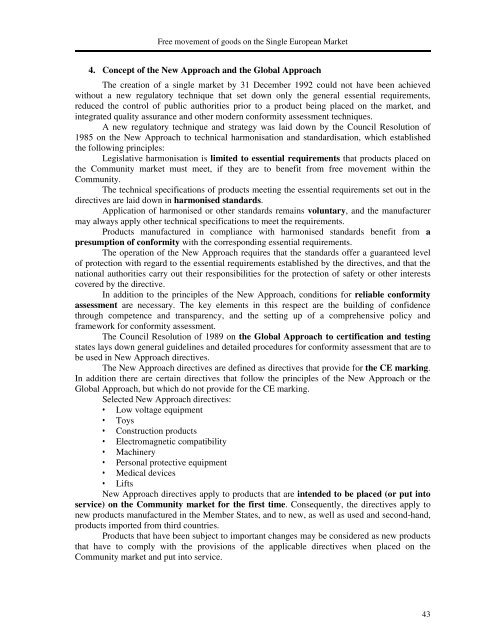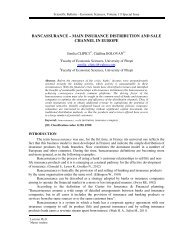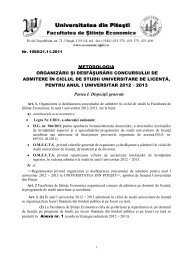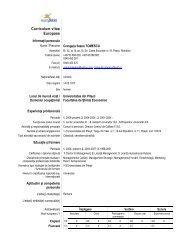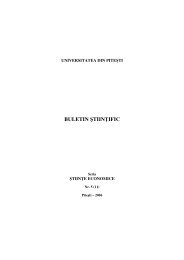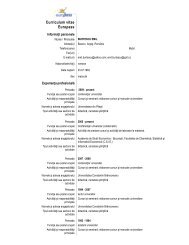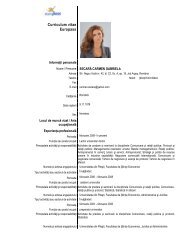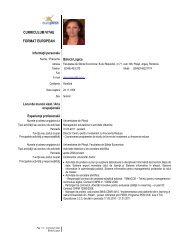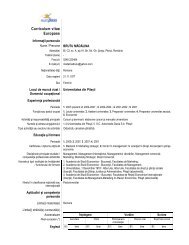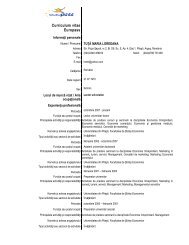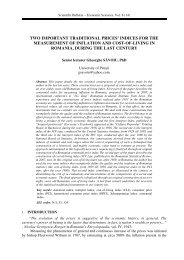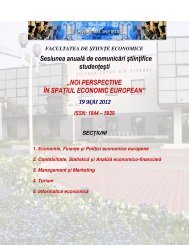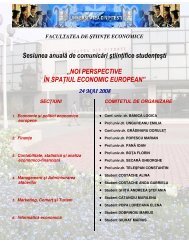buletin Åtiin ific - Facultatea de Stiinte Economice - Universitatea din ...
buletin Åtiin ific - Facultatea de Stiinte Economice - Universitatea din ...
buletin Åtiin ific - Facultatea de Stiinte Economice - Universitatea din ...
- No tags were found...
Create successful ePaper yourself
Turn your PDF publications into a flip-book with our unique Google optimized e-Paper software.
Free movement of goods on the Single European Market4. Concept of the New Approach and the Global ApproachThe creation of a single market by 31 December 1992 could not have been achievedwithout a new regulatory technique that set down only the general essential requirements,reduced the control of public authorities prior to a product being placed on the market, an<strong>din</strong>tegrated quality assurance and other mo<strong>de</strong>rn conformity assessment techniques.A new regulatory technique and strategy was laid down by the Council Resolution of1985 on the New Approach to technical harmonisation and standardisation, which establishedthe following principles:Legislative harmonisation is limited to essential requirements that products placed onthe Community market must meet, if they are to benefit from free movement within theCommunity.The technical spec<strong>ific</strong>ations of products meeting the essential requirements set out in thedirectives are laid down in harmonised standards.Application of harmonised or other standards remains voluntary, and the manufacturermay always apply other technical spec<strong>ific</strong>ations to meet the requirements.Products manufactured in compliance with harmonised standards benefit from apresumption of conformity with the correspon<strong>din</strong>g essential requirements.The operation of the New Approach requires that the standards offer a guaranteed levelof protection with regard to the essential requirements established by the directives, and that thenational authorities carry out their responsibilities for the protection of safety or other interestscovered by the directive.In addition to the principles of the New Approach, conditions for reliable conformityassessment are necessary. The key elements in this respect are the buil<strong>din</strong>g of confi<strong>de</strong>ncethrough competence and transparency, and the setting up of a comprehensive policy andframework for conformity assessment.The Council Resolution of 1989 on the Global Approach to cert<strong>ific</strong>ation and testingstates lays down general gui<strong>de</strong>lines and <strong>de</strong>tailed procedures for conformity assessment that are tobe used in New Approach directives.The New Approach directives are <strong>de</strong>fined as directives that provi<strong>de</strong> for the CE marking.In addition there are certain directives that follow the principles of the New Approach or theGlobal Approach, but which do not provi<strong>de</strong> for the CE marking.Selected New Approach directives:• Low voltage equipment• Toys• Construction products• Electromagnetic compatibility• Machinery• Personal protective equipment• Medical <strong>de</strong>vices• LiftsNew Approach directives apply to products that are inten<strong>de</strong>d to be placed (or put intoservice) on the Community market for the first time. Consequently, the directives apply tonew products manufactured in the Member States, and to new, as well as used and second-hand,products imported from third countries.Products that have been subject to important changes may be consi<strong>de</strong>red as new productsthat have to comply with the provisions of the applicable directives when placed on theCommunity market and put into service.43


